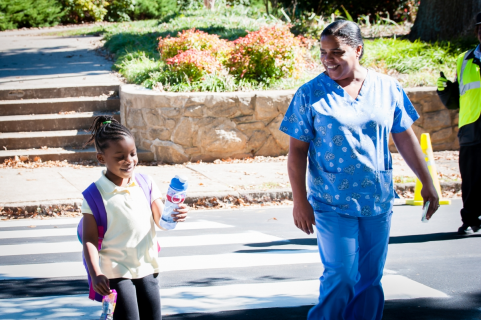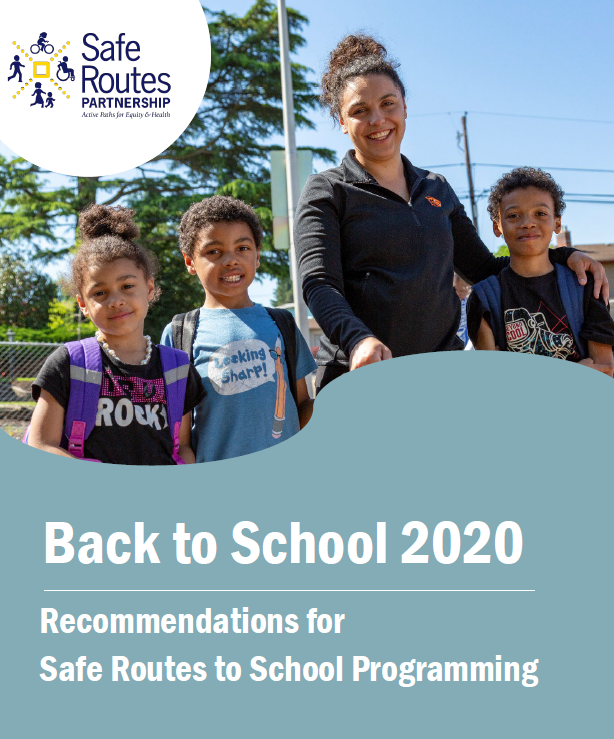
As school resumes in the fall, Safe Routes to School practitioners will be looking for guidance on how to implement their programs remotely, in-person, and/or through a hybrid model. Using the Six E’s framework – Education, Engineering, Evaluation, Encouragement, Engagement, Equity – the Back to School 2020 Working Group has developed Back to School 2020: Recommendations for Safe Routes to School Programming, a comprehensive set of short-term, actionable recommendations for implementing Safe Routes to School programs this fall.
 To begin the process of developing the recommendations, we conducted scenario planning for fully remote, hybrid, and in-person learning models. To understand the assumptions and considerations that went into developing each set of recommendations, you can view the scenario planning module here. For each E within each of the three learning scenarios, the guide outlines strategies, tools, considerations, and advice for planning for the long term. There is a degree of crossover and consistency in the recommendations across the three scenarios; this is intentional to emphasize priority guidance that is relevant no matter what going back to school looks like in your community. Use the menu on the left to navigate the guide on our website, or click the links below to download PDF versions. We invite you to adapt and modify these guidelines to fit the unique needs of your school, district, or community.
To begin the process of developing the recommendations, we conducted scenario planning for fully remote, hybrid, and in-person learning models. To understand the assumptions and considerations that went into developing each set of recommendations, you can view the scenario planning module here. For each E within each of the three learning scenarios, the guide outlines strategies, tools, considerations, and advice for planning for the long term. There is a degree of crossover and consistency in the recommendations across the three scenarios; this is intentional to emphasize priority guidance that is relevant no matter what going back to school looks like in your community. Use the menu on the left to navigate the guide on our website, or click the links below to download PDF versions. We invite you to adapt and modify these guidelines to fit the unique needs of your school, district, or community.
Note: The Safe Routes Partnership issues the following recommendations and guidelines as a resource for schools, families, and Safe Routes professionals to support safe and responsible walking and biking options to and from school and at home, in accordance with state and local public health regulations. The Safe Routes Partnership is not an expert on infectious diseases or epidemiology, and these recommendations should not be used for medical decision making. Because of the evolving nature of guidelines at the federal level and variation in strength of recommendations in communities across the country, it was not possible to develop national recommendations that complied with all communities’ regulations and guidance. We urge you to adhere to public health guidance that prioritizes the health and safety of students, school staff, and your community at-large. Please consult the Center for Disease Control and Prevention's guidelines on reopening schools, childcare, and youth programs during COVID-19 for more information.
Back to School 2020: Recommendations for Safe Routes to School Programming (Full Guide)
Download the full guide as a PDF
Scenario A: Remote Learning Recommendations
Scenario B: Hybrid Learning Recommendations
Scenario C: In-Person Learning Recommendations

